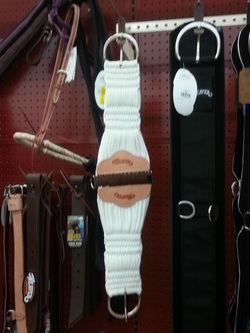
When you are purchasing a cinch, make sure that it is balanced and the center is actually in the middle of the cinch.
In this photo, we have a 27 strand Rayon cord roper style cinch with the center Dees attached with nylon webbing wrapped with brown rayon cordage. It has sewn leather reinforcements. As you can see, the center is not sewn straight.
I've measured a 32" cinch of this style and brand that stretched to 35 inches after 20 minutes of use on a horse. That's 3 inches! Many times our horses get blamed for holding their breath or bloating during saddling, but rather the cinch actually stretched.
In this photo, we have a 27 strand Rayon cord roper style cinch with the center Dees attached with nylon webbing wrapped with brown rayon cordage. It has sewn leather reinforcements. As you can see, the center is not sewn straight.
I've measured a 32" cinch of this style and brand that stretched to 35 inches after 20 minutes of use on a horse. That's 3 inches! Many times our horses get blamed for holding their breath or bloating during saddling, but rather the cinch actually stretched.
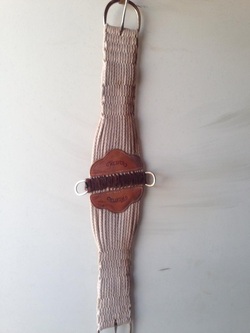
Here you can see another Rayon cinch of the same style and brand, that has stretched out of shape after use. Look at how center is now even more crooked, and the cinch buckles are no longer even. This imbalance could easily attribute to girth pain and a cinchy horse!
I found this video on Youtube depicting the same cinch that literally tore apart broke with a 6 yr old little girl riding her horse.
http://youtu.be/rvfM6RP6LZw
There can be a couple reasons for this problem:
I found this video on Youtube depicting the same cinch that literally tore apart broke with a 6 yr old little girl riding her horse.
http://youtu.be/rvfM6RP6LZw
There can be a couple reasons for this problem:
- It could be that the machine stitching was too tight causing the thread to cut through the cord.
- The cinch was purchased in the fall and not used all winter, it could have rotted, although that usually doesn't occur with man-made materials such as rayon cordage.
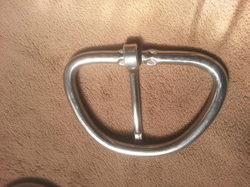
This is a nickle plated cinch buckle that has split at the weld. A little more time and pressure under use and the split would separate even more allowing the buckle tongue to displace. The latigo would no longer be buckled and a wreck would follow!
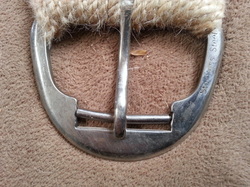
This is an import H Roller buckle. Notice how the narrow roller bar has bent. This is on a Classic Equine Roper cinch. Interestingly, this cinch was purchased to replace a cinch where the roller broke out of the buckle. We will not be carrying these H Roller Buckles.

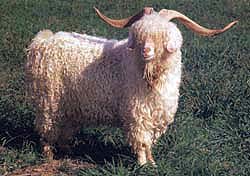
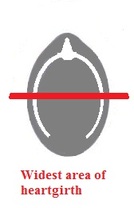

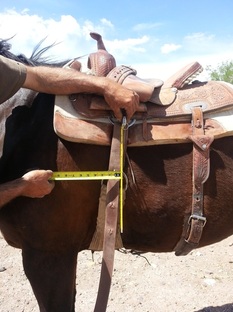
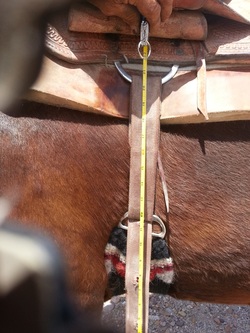
 RSS Feed
RSS Feed